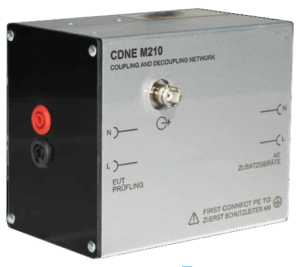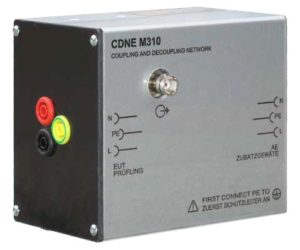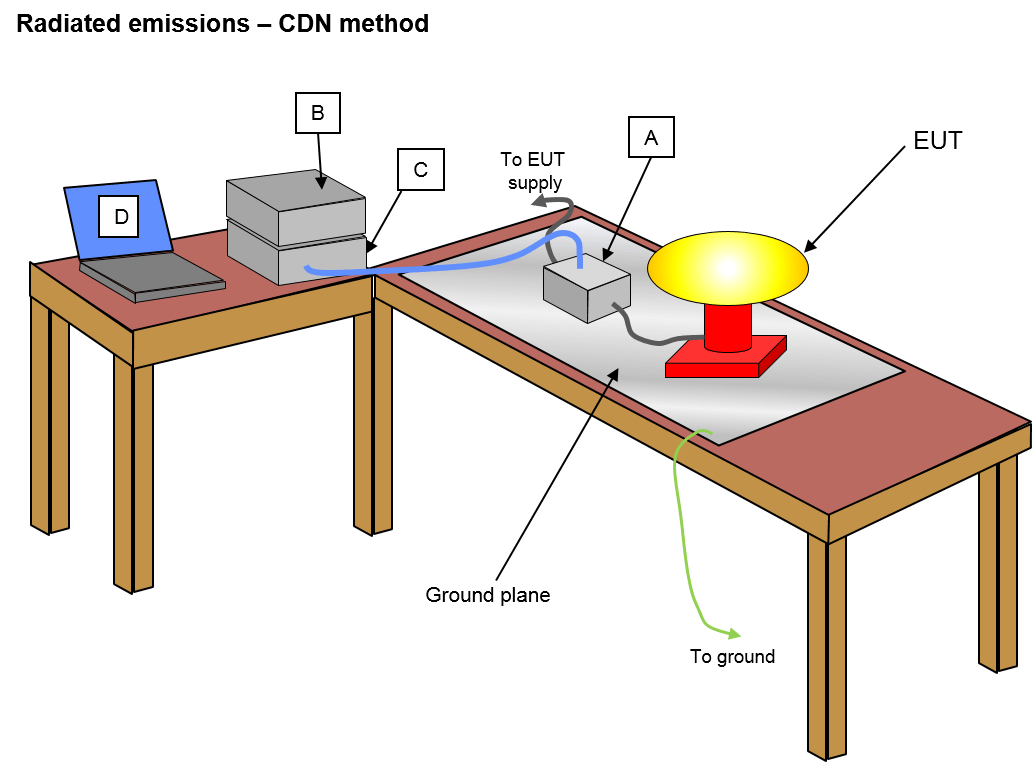Equipment required:
A CDNE
B SA1002 or SA3000 EMC analyser
C RF910 pre-selector
D Software for your PC (included with the analyser)
Note: CDNE appropriate to cable type.
For mains supply, select M2 or M3 models
CDNE M2 / CDNE M3
As an alternative to the OATS (open area test sites) method of measuring radiated emissions.
Certain types of product are permitted to use a simpler technique that avoids the need for open area test sites, with all the issues that they raise.
The reasoning behind this alternative is that if a product is relatively small, it typically has one cable connected to it, then the source of radiation (emissions) will be the cable.
For frequencies up to 300MHz (wavelength = 1m), the product itself is too small to be an effective radiator. The cable (normally the mains power cable) will have an effective length of many metres. This is perfect for acting as a transmitting antenna.
If we measure the level of signal being injected onto this cable, we can use this measurement as an indication of radiated EMC signal.
The most common type of product that fits this definition are 'luminaires'. The product specific standard that applies to luminaires is EN 55015. This standard now includes the measurement of RF emissions in the band 30MHz - 300MHz, and offers the CDN method as an option.


A CDN provides the measurement transducer. Originally, the CDN as specified in IEC61000-4-6 (which is designed to inject RF on the cable for immunity testing purposes) was accepted. Now however, a CDN with tighter specifications is required, these are type CDNE. We have two models, the M2 CDNE and the M3 CDNE for 2 core and 3 core mains cables respectively.
The EMC analyser (SA1002 or SA3000) allows CDN as an input device and shows the appropriate EN 55015 limits.
Recommended ancillaries are a pre-selector and pre-amplifier (SA1020).
The test can be performed in any lab environment. No special screening is required and the only setup requirement is a table top ground plane.


